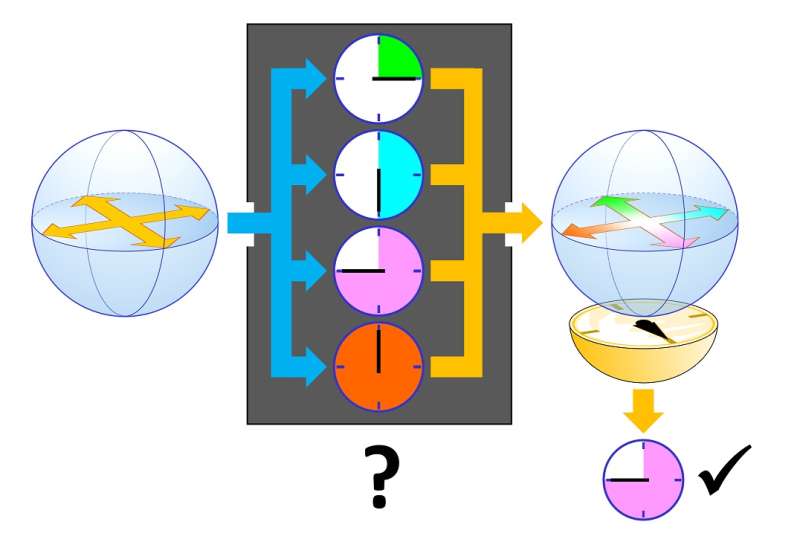April 13, 2016 report
Physicists quantify the usefulness of 'quantum weirdness'

(Phys.org)—For the past 100 years, physicists have been studying the weird features of quantum physics, and now they're trying to put these features to good use. One prominent example is that quantum superposition (also known as quantum coherence)—which is the property that allows an object to be in two states at the same time—has been identified as a useful resource for quantum communication technologies.
Recently, physicists have been developing ways to measure the amount of quantum coherence in a system. Now in two new papers, a team of physicists and mathematicians (Carmine Napoli, et al., and Marco Piani, et al.) has introduced a way to quantify the usefulness of quantum coherence by looking at this property from a purely operational perspective. The new measurement method can answer questions such as "how useful will a system's quantum coherence be for a task like encoding and decoding secret messages?" In other words, the new method quantifies the advantage of using quantum mechanics.
"We introduce a new way to quantify quantum coherence, the quintessential signature of quantum mechanics, capturing the extent to which a system can live in a superposition of distinct states (like a coin being simultaneously heads and tails, or a famous cat dead and alive)," the researchers wrote.
As the scientists explain, the usefulness of quantum coherence can be described by a measure that they introduce as the "robustness of quantum coherence." Basically, this measures how easy it is to destroy a state's quantum coherence.
The concept is a specific version of a more general measure the scientists introduce: the "robustness of asymmetry." When a quantum system is asymmetrical, it's possible to distinguish between different 'rotations' of the system. Physicists can then use the system as a physical reference frame, or for quantum metrology applications, it could be used to make extremely precise measurements that would not be possible in the absence of asymmetry.
Overall, the physicists view the results as a step forward in the quest to turn the weird fundamental features of quantum mechanics into something useful. Besides benefitting physics applications such as quantum metrology and secure communication, the new measure could also be used to quantify quantum coherence in biological systems, such as photosynthesis and bird navigation.
"The realization that quantum properties can be harnessed for practical applications is presently fueling a heated international race to develop and deploy quantum technologies," the physicists wrote. "This is no coincidence: the improved study and test of fundamental quantum properties and our increased ability to exploit them go hand in hand."
More information:
Carmine Napoli, et al. "Robustness of coherence: An operational and observable measure of quantum coherence." Physical Review Letters. DOI: 10.1103/PhysRevLett.116.150502
Also at arXiv:1601.03781 [quant-ph]
Marco Piani, et al. "Robustness of asymmetry and coherence of quantum states." Physical Review A. DOI: 10.1103/PhysRevA.93.042107
Also at arXiv:1601.03782 [quant-ph]
Journal information: Physical Review Letters
© 2016 Phys.org. All rights reserved.




















